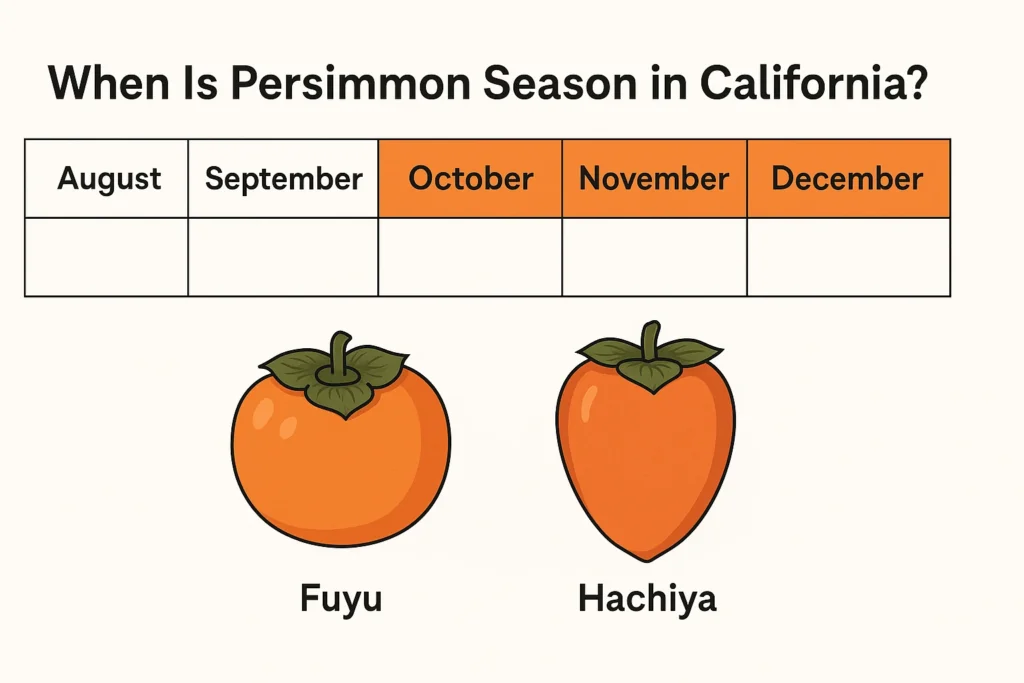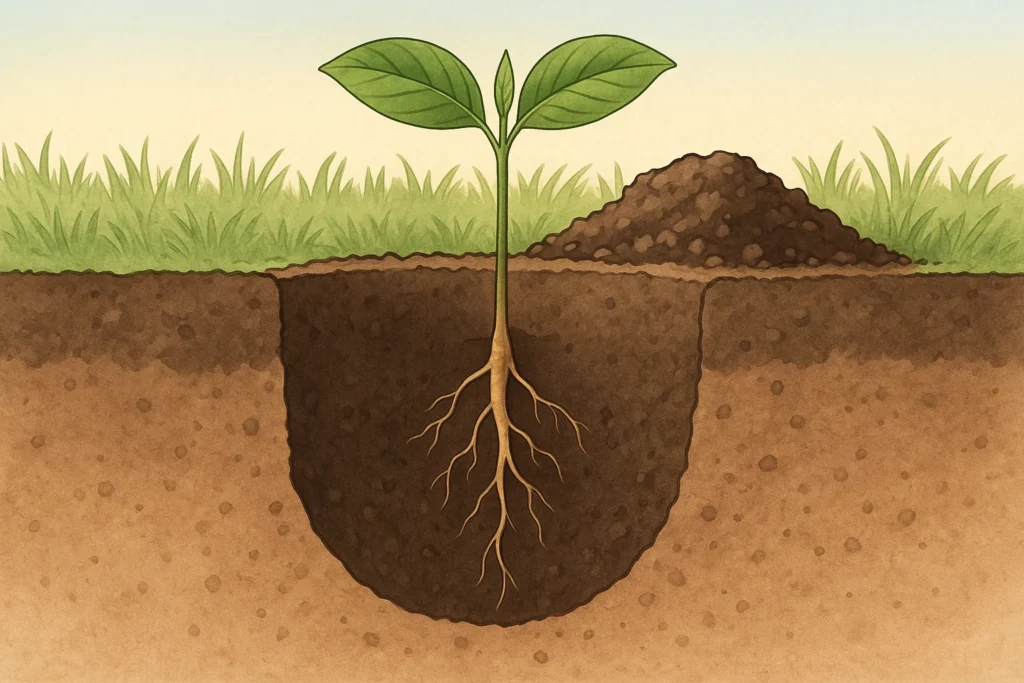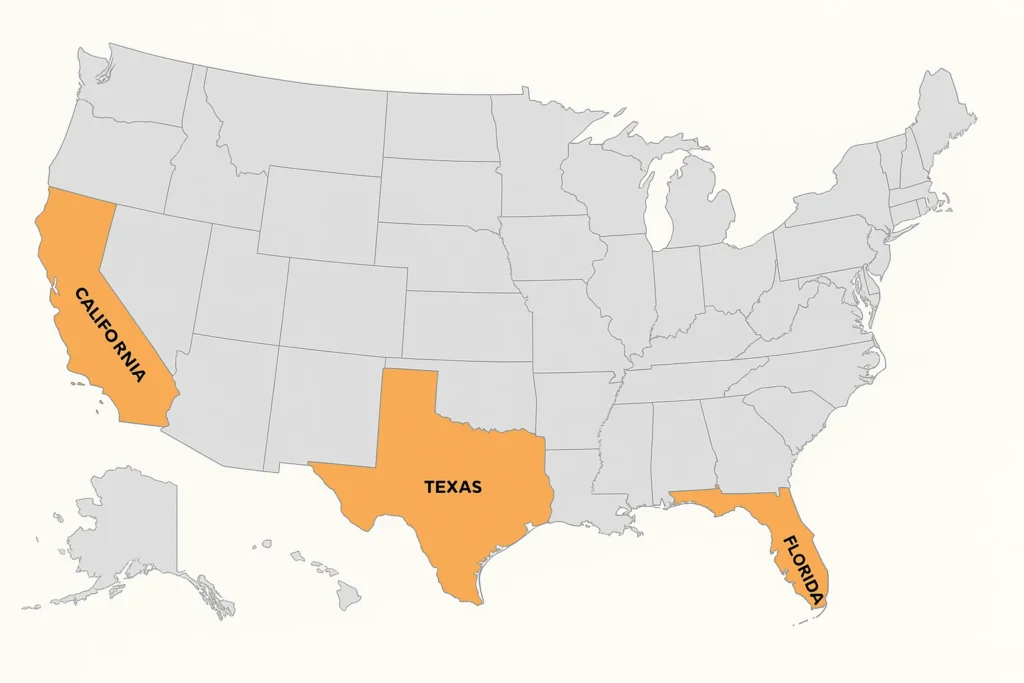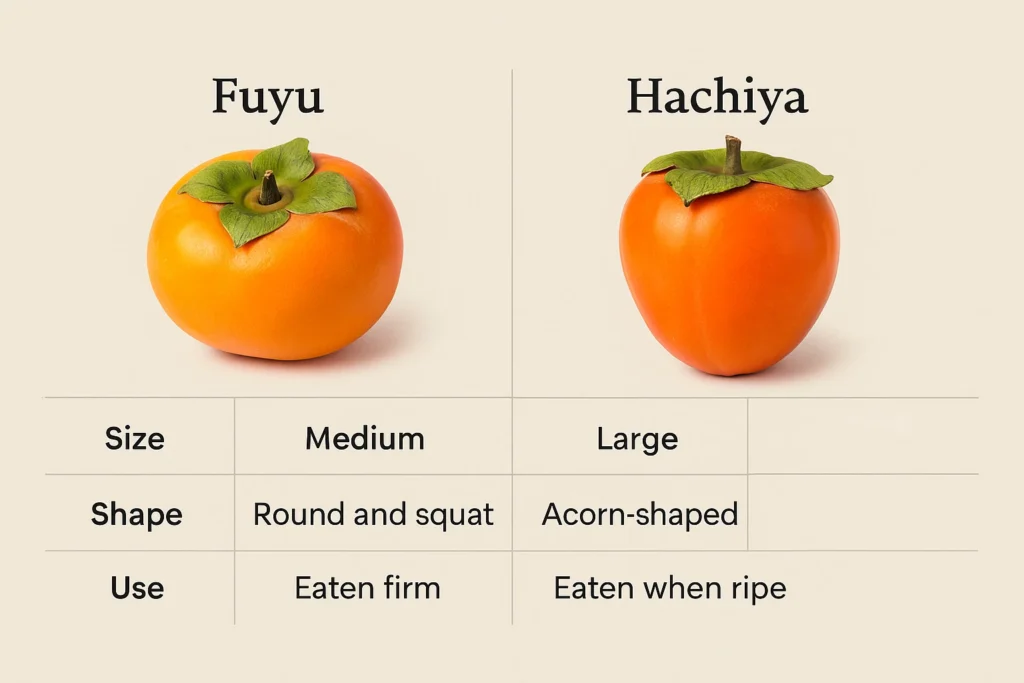How to Plant a Persimmon Tree from Seed to Harvest (California-Friendly Guide)
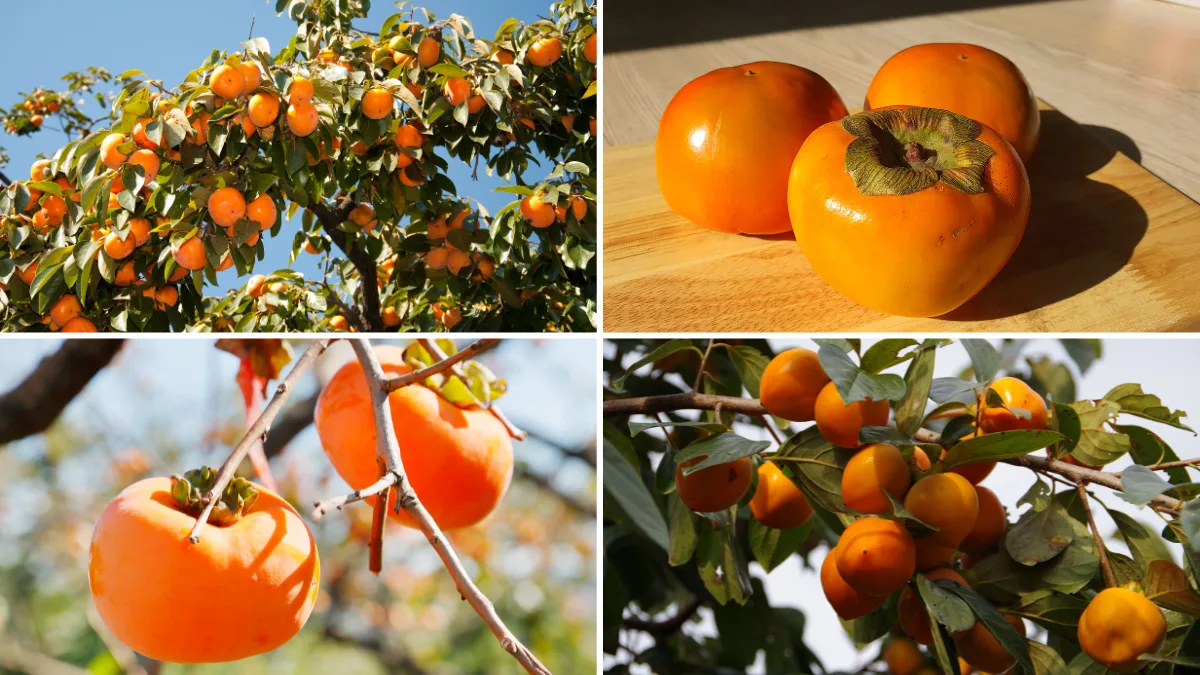
To successfully plant a persimmon tree, select a location with full sun or partial shade, especially in hotter regions, and dig a deep hole for the tree’s taproot. Ensure the soil is well-drained and slightly acidic, and consider staking the tree when young to encourage a straight form.
Persimmon trees are a beautiful, fruit-bearing addition to any home garden. Their glossy leaves, striking fall color, and sweet orange fruit make them both ornamental and practical. Learning how to plant a persimmon tree isn’t complicated, but it does take some thoughtful planning — especially if you’re starting from seed.
This guide walks you through each step, from seed sprouting and transplanting to fertilizer use and seasonal care. Whether you’re in California or another growing region, we’ll cover everything you need to grow a healthy, productive persimmon tree from the ground up.
Let’s start with when to expect fruit — so you know what you’re planting toward.
Table of Contents
When Is Persimmon Season in California?
Persimmon season in California runs from September to December, depending on the variety and your microclimate. Fuyu persimmons tend to ripen earlier, while Hachiyas usually mature later in the fall. Knowing when the fruit is in season can help you plan your planting schedule better, especially if you’re starting from seed or transplanting a young tree.
If you’re located in California, you’re in luck — the state’s Mediterranean climate provides ideal growing conditions. For those outside California, be sure to check your USDA Hardiness Zone before planting.
How to Sprout a Persimmon Seed?
Before diving into how to plant a persimmon tree outdoors, you’ll need to understand how to sprout a persimmon seed. It’s simple but requires patience.
Here’s how to do it:
- Extract seeds from a fully ripe persimmon fruit. Rinse thoroughly to remove any pulp.
- Dry them for a day or two, then wrap in a moist paper towel.
- Place the wrapped seeds in a sealed bag and refrigerate for 6–8 weeks. This cold stratification mimics winter and boosts germination.
- After chilling, plant each seed in a seed-starting mix, about an inch deep. Keep the soil moist and warm (70–75°F).
- Germination can take up to 8 weeks, so be patient.
Once the seedling reaches a few inches tall and has several true leaves, it’s ready to be hardened off and eventually moved outdoors.
How to Plant Persimmons from Seeds?
Once your sprouted seedling is 4–6 inches tall and your last frost date has passed, it’s time to transplant. Persimmons have a deep taproot, so you’ll want to plant them where they can grow undisturbed.
- Pick a sunny location that’s protected from high winds.
- Persimmons prefer slightly acidic, well-draining soil.
- Dig a hole twice the width and just as deep as the root system.
- Gently place the seedling into the hole and backfill with soil.
- Water thoroughly and mulch around the base to retain moisture and suppress weeds.
Learning how to plant a persimmon tree from seed takes effort, but it’s incredibly rewarding. Just know it could take 5–7 years to bear fruit when grown this way.
How Do You Plant a Persimmon Tree?
For most backyard gardeners, buying a bare-root or potted sapling is the faster route to fruit. If you’re wondering how do you plant a persimmon tree from a nursery, here’s what to know.
Follow these steps:
- Choose a spot with full sun or light afternoon shade, depending on how hot your summers get.
- Dig a hole as deep as the root ball and twice as wide.
- Loosen compacted roots before planting. Position the tree so that the top of the root ball is slightly above ground level.
- Fill the hole, tamp gently, and water deeply.
- Apply mulch, keeping it a few inches away from the trunk.
- Stake young trees if your site is windy.
Be sure to keep the tree well-watered, especially during the first two years. This helps establish a strong root system — essential if you want fruit sooner.
Persimmon Tree Fertilizer – What to Use and When?
Fertilization can make a big difference in the health and productivity of your tree. So let’s cover persimmon tree fertilizer basics.
Fertilizing tips:
- For young trees, apply a balanced fertilizer (like 10-10-10) once in spring.
- Mature trees may benefit from a light application of nitrogen before new growth begins.
- Avoid over-fertilizing — it can lead to poor fruit set and excessive leafy growth.
Incorporating organic matter such as compost or bone meal in the planting hole also helps improve root development.
Learning how to plant a persimmon tree includes understanding how to keep it healthy with the right nutrients over time.
Where Are Persimmons Grown?
Knowing where persimmons are grown helps you decide if they’ll thrive in your area.
Persimmon-growing regions include:
- California: the top U.S. producer
- Texas, Florida, and parts of the Southeast
- Asia: Japan, China, and Korea have cultivated them for centuries
They do best in zones 7–10. Use this planting zone finder to check your local climate compatibility.
Persimmon Fruit Tree Maintenance Tips
Once established, a persimmon fruit tree is relatively low-maintenance — but it does need some care.
- Water regularly in the first few years.
- Prune in late winter to maintain shape and remove dead or crossing branches.
- Check periodically for pests like scale and aphids.
- Apply a layer of mulch each spring.
One of the joys of learning how to plant a persimmon tree is watching it grow with minimal fuss — they’re drought-tolerant and rarely fussy once settled.
Types of Persimmon Trees for Home Growers
When deciding on the best variety, knowing your options helps. The most common types of persimmon trees are:
Asian Persimmons:
- Fuyu: Crisp, sweet, and eaten while firm.
- Hachiya: Astringent until fully ripe and soft.
American Persimmons:
- Smaller fruit, highly cold-tolerant, native to the eastern U.S.
Pick a variety that fits your zone, soil, and taste preferences. Again, check your planting zone here.
Other Helpful Gardening Tools & Guides
We’ve built a collection of tools to support your journey from seed to harvest. Whether you’re learning how to plant a persimmon tree or evaluating a mature one, these calculators can help:
- Tree Burl Value Calculator
- Black Walnut Tree Value Calculator
- Tree Planting Cost Calculator
- Tree Age Calculator
- Tree Height Calculator
- Tree Trimming Cost Calculator
- Tree Removal Cost Calculator
- Firewood Cord Calculator
For more tools and information, explore our full calculator directory here.
For expert-backed houseplant care tips, explore this USDA guide on sustainable practices and healthy plant care.
Common Questions About Growing Persimmons
How long does it take a persimmon tree to bear fruit?
From seed: 5–7 years. From sapling: 3–5 years.
Can persimmons grow in containers?
Yes, dwarf varieties like Fuyu can thrive in large pots with proper drainage.
Do persimmon trees need a pollinator?
Many Asian varieties are self-pollinating, while American types often need a second tree.
What is the best location to plant a persimmon tree?
Persimmons grow best in full sun and well-drained soil. Choose a location protected from strong winds, with space for the tree’s roots and canopy to expand.
What type of fertilizer should I use for a persimmon tree?
Use a balanced fertilizer (like 10-10-10) in spring. Young trees benefit from compost or bone meal. Avoid over-fertilizing, as it can reduce fruit production.
Understanding how to plant a persimmon tree also means knowing how to troubleshoot — and we’re here to help.
Conclusion
Now that you know how to plant a persimmon tree, you’re well-equipped to start your own. From sprouting seeds to harvesting ripe fruit in fall, persimmon trees offer incredible rewards for your patience.
They’re resilient, beautiful, and productive — a perfect addition to any garden.

